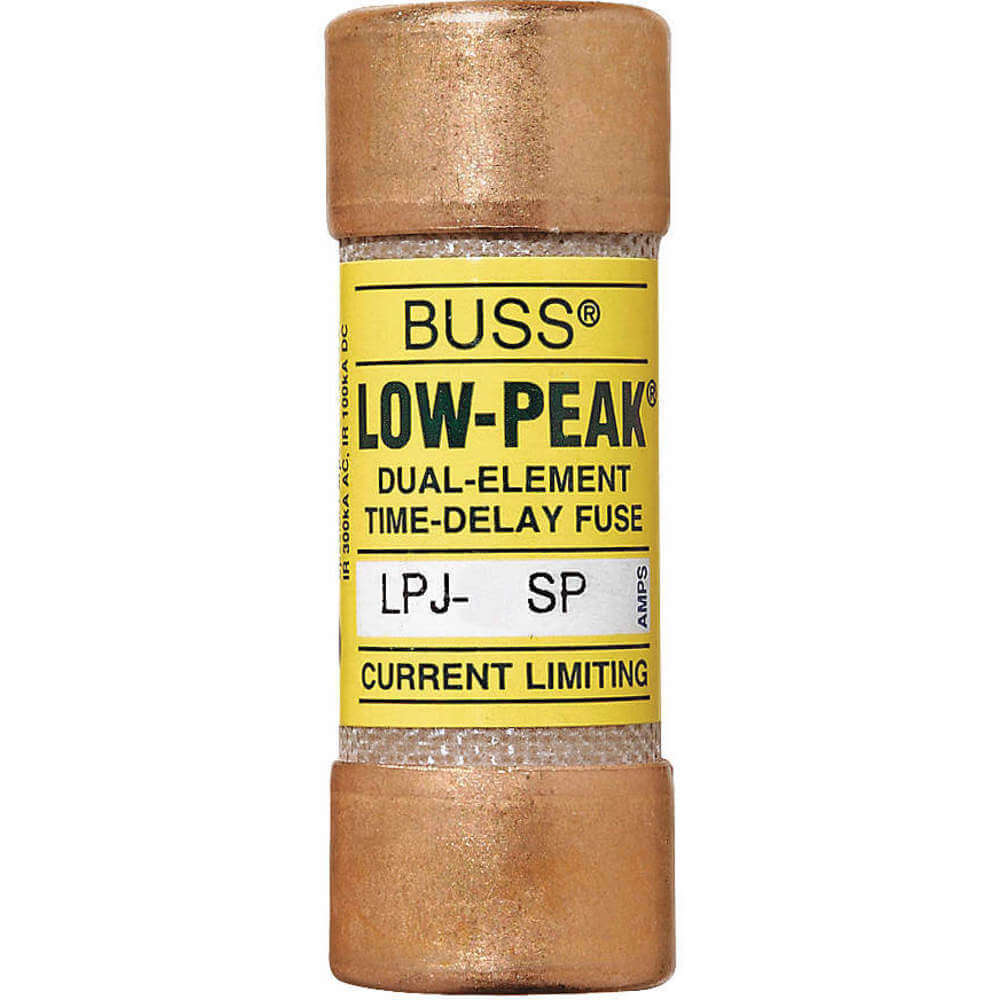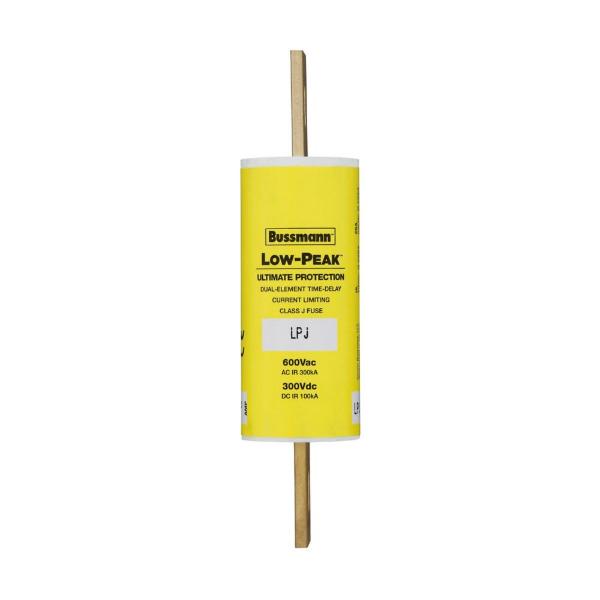Bussmann LPJ-500SP fuse is used to safeguard equipment from excessive currents and short circuits. This fuse is used in power distribution units and has a non-indicating design, simplifying its use and installation.
Working Mechanism:
- When the current passing through the fuse exceeds its 500A rating, the internal element heats up rapidly due to the Joule effect.
- This causes the fuse element to melt, interrupting the current flow and opening the circuit.
- The time delay feature of 10 seconds at 500 percent of the rated current ensures that the fuse doesn't unnecessarily trip during startup or temporary surges.
- The fuse's dual-element design and time delay make it a reliable solution for preventing damage to equipment in high-power electrical systems.
Features:
- >This Class J fuse comes with a dual-element design that enhances protection by allowing two separate fuse elements to respond to overcurrent conditions.
- It features Low-Peak characteristics for an optimal balance between overcurrent protection & minimising nuisance tripping in high-power electrical systems.
- This Low-Peak fuse has bolted blade end x bolted blade end connections for a secure and stable installation, reducing the risk of loose connections & potential hazards.
- It is equipped with current-limiting features to tolerate brief overcurrent conditions without triggering.
- This fuse has amperage ratings of 500A.
Frequently Asked Questions:
Q. What does Class J mean in relation to this LPJ-500SP fuse?
A. Class J refers to a specific type of fuse classification based on its current-carrying and interrupting capabilities. Class J fuses are fast-acting and designed to protect sensitive equipment from overcurrent conditions.
Q. What are the voltage levels that this fuse can handle?
A. The fuse has a voltage rating of 600VAC and 300VDC, making it suitable for various industrial applications involving different voltage levels.
Q. Does this LPJ-500SP fuse have any time-delay features?
A. Yes, the fuse has time-delay capabilities, which means it can tolerate temporary overcurrent conditions for a specific time period before triggering.
 Change Country
Change Country

 In Stock : 43 Units
In Stock : 43 Units



